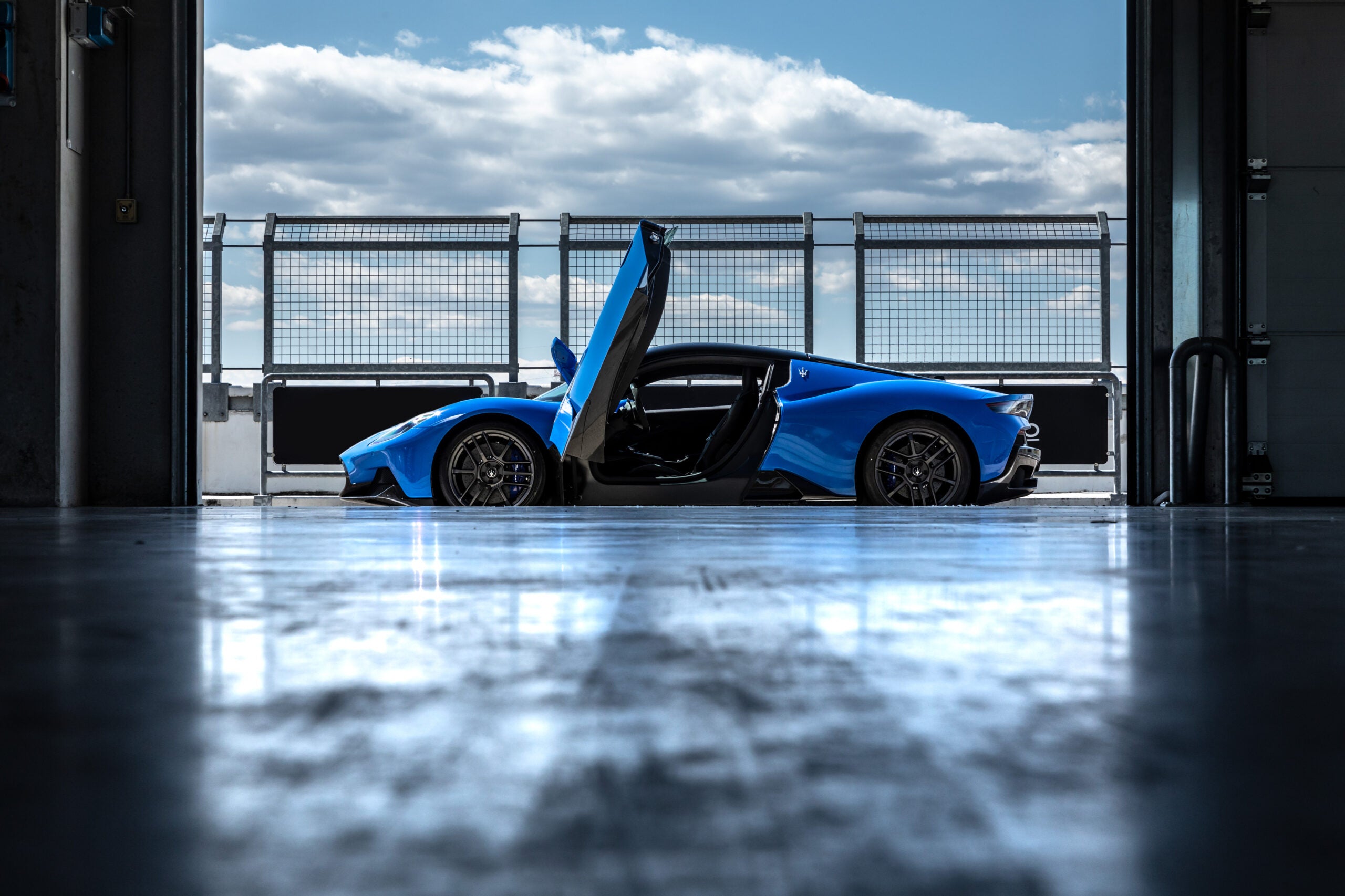Maserati’s MC20: A powerful engine in a new supercar
The Maserati name tends to conjure up images of low-slung Italian coupes, but in reality the storied brand hasn’t offered up a proper sports car since the limited-production MC12 debuted back in 2004. The company made its debut as an automaker in 1926 with the Tipo 26 race car and soon went on to become a formidable competitor in motorsport, but the ensuring decades were tumultuous, and the company changed hands a number of times before Fiat took ownership in 1993 and then handed the reins over to the Fiat-owned Ferrari brand.
Maserati would ostensibly become Ferrari’s luxury division when it took full ownership of the company in 1999, and the years since have seen Ferrari provide more conventional versions of its high-winding powerplants to Maserati for use in vehicles like the Ghibli sedan and Levante sport-utility. But under the larger Fiat-Chrysler banner, Maserati’s models also inherited plenty of hand-me-down hardware from elsewhere in the group’s portfolio, and glacially-paced development efforts have added to the brand’s recent struggles to uphold its racy reputation.
The introduction of the MC20 marks an entirely new chapter for Maserati, which is now part of Stellantis. A true clean-sheet design, the two-seater is underpinned by an all-new carbon fiber monocoque chassis that was developed in-house and is built in Modena, Italy. Double wishbone-style suspension setups at the front and rear of the car link up with the chassis by way of aluminum subframes, and the streamlined carbon fiber bodywork and aerodynamics come as a result of more than two thousand hours of testing in the Dallara Wind Tunnel, along with extensive computational fluid dynamics simulation.

The Nettuno engine
The powertrain is where things start to get really interesting. Motivation comes from Maserati’s 3.0-liter, twin-turbocharged “Nettuno” V6 engine, an all-new power plant that was also developed in-house at Maserati. The new power plant boasts on-demand twin-combustion technology cribbed from Formula 1, which puts a combustion chamber between the central spark plug and the conventional combustion chamber to provide a more precise burn, in turn improving the engine’s efficiency as well as its performance.
[Related: Maserati’s new luxury SUV transforms from hot rod to off-roading beast]
The result is one of the most power-dense engines in the automotive industry today, and peak output numbers of 621 horsepower and 538 pound-feet of torque gives this 3,330-pound coupe a best-in-class power-to-weight ratio amongst rivals that hail from brands like Lamborghini, Porsche, and McLaren. That bodes well for the here and now, but Maserati also wisely took the long view when developing the MC20 platform, which was designed from the outset to support an all-electric variant. The EV is due to hit the streets in a few years’ time.

Behind the wheel
Settling in at the helm, it’s immediately obvious that the MC20 is targeting those looking for a fast grand-touring sports car like the 911 Turbo S rather than a stripped-down track toy. Gone is the Maserati interior switchgear of past models that could often trace its origins back to vehicles like the Dodge Durango. Instead, the MC20 boasts a wholly bespoke cockpit swathed in carbon fiber, alcantara, and brushed steel.
A high resolution 10.25-inch digital gauge cluster provides the requisite real-time data and performance information, while a 10.25-inch touchscreen display with wireless Apple CarPlay and Android Auto compatibility handles the infotainment duties with sharp graphics and snappy response. Along the center tunnel are controls for drive modes (Wet, GT, Sport, and Corsa), as well as suspension stiffness, gearbox modes, the windows and door locks, and physical controls for the audio system. Meanwhile the flat-bottomed steering wheel houses the ignition and launch control buttons as well as cruise control and media adjustments. The layout is uncluttered, intuitively designed, and posh. And unlike most mid-engine sportscars, the MC20 is surprisingly easy to get in and out of—thanks to the monocoque’s relatively svelte side sills, the butterfly doors, and the generous amount of headroom for that.
[Related: Anyone can drive a supercar, but truly tapping its potential is another matter]
The engine comes to life with a lively growl that quickly retreats into the background. Maserati has done a fine job of making this new V6 sound properly exotic but, like many engines of today, its personality is masked by the inherent muffling effect of its turbochargers. Switching from GT mode over to either Sport or Corsa mode will open up an exhaust valve for more aural drama, but it’s still a little too quiet for our tastes. Even on boil, road and wind noise will often overpower the engine’s soundtrack, which can make it difficult to nail upshift timing when manually managing the cogs with the paddles.
Fortunately the dual-clutch transmission is well-programmed enough to be left alone in most situations. Left in GT mode, it works in the background to quietly deliver near-seamless shifts in normal driving situations. This also puts the suspension dampers in their most compliant setting, which is sportscar-firm but still agreeable for regular use even on the pockmarked streets of Los Angeles.

A digital rear-view mirror
The MC20’s everyday usability is also significantly bolstered by its digital rear-view mirror, which displays a real-time feed from a camera mounted on the rear deck of the car. Traditional rear-view mirrors in mid-engine cars typically offer a glimpse of sunlight out the rear glass and not much else, but the digital mirror’s unencumbered view of the outside world behind you makes it effortless to check your blind spots when jockeying for position on LA’s ruthless freeway systems. Plus, the MC20 even boasts two storage compartments—one at the nose of the car, and another, larger space just behind the engine bay at the rear. It’s almost practical!
Of course it should come as no surprise that the MC20 truly shines out on the twisting tarmac that drapes the Angeles National Forest about an hour north-east of downtown. Surefooted balance, confidence-inspiring stopping power, and blisteringly quick acceleration are all on the menu, as is precise response from the quick-ratio steering rack. Specially developed Bridgestone Potenza Sport summer tires offer up plenty of grip for back road blasts without the trade-off in noise and harshness that track-focused rubber often comes with, but we’d expect to see the latter on more hardcore iterations of the MC20 that are likely to come down the line.
These fast, winding stretches of road gave us a chance to sample the MC20’s Sport and Corsa modes. The former’s tuning is ideal for the job (as the name implies, Corsa is best suited for hot lap pacing on a closed course), but we really wish that the MC20 also offered a custom driving mode that allowed would-be owners to mix and match the vehicle’s various adjustable parameters to their preference. Regardless, the MC20 is a thrilling dance partner out in the hills and a surprisingly civil machine around town. But then again, a starting price of $212,000 ($256,050 as-tested) tends to set some high expectations.
Thankfully, Maserati also has plans that extend beyond quarter-million dollar supercars like the MC20. The recently-announced Grecale sport-utility, for instance, is aimed squarely at Porsche Macan buyers. The crossover will come packing a lot of technology that’s showcased in the MC20 (including the Nettuno V6 in higher trim levels), and it will also likely play a fundamental role in the brand’s transition to electrified powertrains.
In the meantime, well-heeled sportscar buyers who are looking to savor the moment while also steering clear of the usual suspects would be wise to keep the MC20 on their short list.



